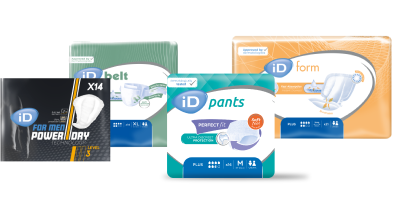Strengthen your Pelvic Floor, why Bother?
Urinary Incontinence affects a substantial proportion of women and men, which can have a significant impact on an individual’s quality of life. In this article, we’ll focus on the effects of urinary incontinence on women.
You are not alone: Urinary Incontinence is Common!
Population studies from numerous countries have reported that the prevalence of Urinary Incontinence among women is between 25-45%. The prevalence increases with increasing age, and women aged 70 years or over have a more than 40% chance of experiencing symptoms.
Despite this, the evidence suggests that less than half of women experiencing symptoms will seek out assistance for Urinary incontinence.
Why are we not asking for help?
A study by Waetjen et al. revealed the common reasons why women with Urinary Incontinence might not seek treatment:
- Symptoms were not considered bad enough.
- Bladder weakness is accepted as a natural part of ageing or following childbirth.
- Feeling too embarrassed to talk about their urinary symptoms, even with a professional.
When should we seek help?
It is important to get professional help for any problem that is affecting your quality of life. If you seek help sooner rather than later, it will improve your chances of a positive outcome and can prevent a worsening of your condition.
If you experience any of the following potentially serious symptoms, please seek out immediate medical attention.
- Flow blockage or pain when urinating
- Blood in urine
- Frequent and intense need to urinate
- Frequent and intense need to urinate
- Burning feeling when urinating
- The inability to empty or control the bladder
- Pressure or pain in the pelvic region
- Unusual or abnormal Vaginal bleeding after menopause.
- A persistent change in bowel habit sometimes with abdominal pain
Do you want a 20% discount on your first order?
Receive incontinence tips, expert advice, and promotions by email.
What is Urinary Incontinence
Incontinence is defined as the involuntary leakage of urine from the bladder. Incontinence can affect both men and women in any age group but is more common in women.
The most common types of Urinary incontinence in women are:
- Stress incontinence, which is the involuntary loss of urine on physical exertion. The most common symptoms are leakage of urine with coughing, laughing, sneezing, or lifting objects.
- Overactive Bladder including Urgency Urinary Incontinence. Usually associated with frequent urination and night-time toilet trips, the most common symptom is the sudden urge to urinate, which is difficult to ignore. There can also be leakage of urine when the time it takes to get to the toilet gets the better of you. It is important to rule out infection or obvious pathology when making this diagnosis.
- Mixed Urinary incontinence is the loss of urine associated with urgency but also with physical exertion and coughing and sneezing.
Treatment of Urinary Incontinence (UI)
The good news is that there is a relatively simple treatment approach that can cure or improve symptoms of stress Urinary incontinence and all other types of Urinary incontinence. Pelvic floor muscle strengthening exercises, alternatively known as Kegel Exercises, is the treatment of choice. Better still, the potential negative side effects of performing pelvic floor exercises are rare and minor.
Guidance from NICE (National Institute for Health and Care Excellence) recommends a supervised programme of pelvic floor muscle training of at least three months’ duration for the first-line treatment of stress Urinary incontinence or mixed Urinary incontinence.
Other self-help measures include:
- Reducing caffeine intake
- Losing weight for women with a BMI of over 30.

Pelvic floor Muscle Training
Firstly, it is important to be sure that you are contracting the right muscles in the right way. If you are in any doubt about where the pelvic floor muscles are and how to contract them, checkout my ‘Get to know your Pelvic Floor’ article and video first.
Pelvic floor Muscle Training: How much, how often?
A training regime should include a series of maximal voluntary muscle contractions of varying duration incorporating a period of relaxation between sets.
- 10 long slow holds of between 3-10 seconds
- 10 rapid contractions; contract then quickly let go and relax
Work towards 3 sets of 10 of each type every day.
Incorporate Pelvic Floor Muscle Exercises into your Day
As you become more familiar with these exercises you can progress by practising your pelvic floor muscle exercises in a variety of positions such as lying on your back, on all fours, kneeling up, sitting, and standing.
Finally, we can incorporate pelvic floor muscle exercises into movement and into your everyday activities. You can also practice contracting the muscles in situations where you might have experienced leaks of urine previously.
You can watch this video to practice your pelvic floor muscles exercises with Phillipa.
Now it’s over to you
I hope you are feeling more confident about the steps you can take to improve your pelvic health. Remember, movement is medicine for the body and mind and in most cases if you do your homework, it will make a difference. Act sooner rather than later to improve your outcome and prevent a worsening of your condition.
If you are in any doubt whether this advice is appropriate for you, please seek help from a medical professional.
Video 1 Pelvic floor muscle exercises
Think of the openings in the pelvic floor:
- Squeeze the muscles around the front opening (Urethra) and lift, hold and release.
- Squeeze the muscles around the back opening (anus) and lift, hold and release.
Or you could try:
- Imagine a zipper between the coccyx and pubic bones pulling the bones closer together, hold and release.
- Now squeeze the two sitting bones drawing closer together and forward.
- Now work front to back and side to side simultaneously.
A training regime should include a series of maximal voluntary contractions of varying duration incorporating a period of relaxation between reps and sets.
- 10 long slow holds of between 3-10 seconds
- 10 rapid contractions; contract then quickly let go and relax
Work towards 3 sets of 10 of each every day.
When contracting your pelvic floor muscle you might feel a gentle tightening of the abdominals, but this shouldn’t be overly prominent. You should NOT feel your buttocks tighten, legs rotate out, any movement of your spine or pelvis or downward pressure into the perineum.
Remember it is important that you DO NOT ‘bear down’ as you perform these exercises. Try not to hold your breath and wherever possible coordinate a contraction with an exhalation.
Incorporate Pelvic floor training into the Pilates clam
What is my ideal solution?

Sources
Dumoulin C, Cacciari LP, Hay Smith EJC. Pelvic floor muscle training versus no treatment, or inactive control treatments, for urinary incontinence in women. Cochrane Database of Systematic Reviews 2018, Issue 10. Art. No.: CD005654. DOI: 10.1002/14651858.CD005654.pub4. Accessed 07 November 2022.
https://www.nice.org.uk/guidance/ng123/chapter/recommendations#non-surgical-management-of-urinary-incontinence Accessed 07/11/22
https://www.nhs.uk/conditions/urinary-incontinence/ Accessed 07/11/22
Kinchen KS, Burgio K, Diokno AC, Fultz NH, Bump R, Obenchain R. Factors associated with women’s decisions to seek treatment for urinary incontinence. J Womens Health (Larchmt). 2003 Sep;12(7):687-98. doi: 10.1089/154099903322404339. PMID: 14583109.
Milsom I, Gyhagen M. The prevalence of urinary incontinence. Climacteric. 2019 Jun;22(3):217-222. doi: 10.1080/13697137.2018.1543263. Epub 2018 Dec 21. PMID: 30572737.
